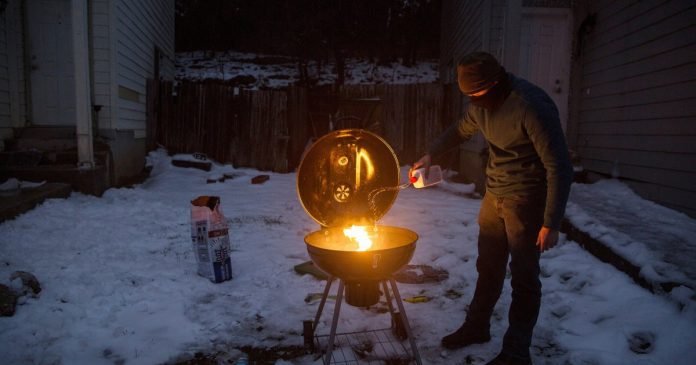Last Updated on February 11, 2025 by Bisma Sehar
Homeowners’ energy expenditures typically rise during the winter months. Heating your home in the winter may be more expensive than cooling it in the summer if you reside in the north with harsh winters.
Furthermore, many people spend more time at home during the winter months, which might increase energy use. When you combine shorter days and long, dark evenings with a spate of holidays, it’s simple to see how you’d expend more energy than you would at other times of the year.
It’s critical to preserve electricity in the winter to reduce your electric bills as well as your carbon footprint. There are various strategies to save energy when the temperature drops, including the seven tips discussed below.
Table of Contents
1. Upgrade Your Thermostat
Programmed heating and air systems will allow you to save money by customizing your heating schedule. At the same time, a smart thermostat will provide you with even more energy-saving alternatives and enable you to operate your HVAC system from anywhere using your smartphone.
Lowering the temperature in your home is also one of the simplest approaches to save money on your energy bill. But you don’t have to turn your home into a polar bear habitat—just a few degrees lower on the thermostat can save you a lot of money in the long run.
2. Reduce the Number of Times You Do the Laundry
This tip is for you if you despise doing laundry. Making sure you have enough clothing to wash and doing large loads less frequently than smaller loads more regularly is an excellent approach to reducing your consumption.
This easy activity will help you make your home greener, and you’ll be able to explain to your darling why the laundry isn’t being done. Washing your clothes in cold water can not only save you money on your power bill, but it will also help your garments come out less wrinkled and last longer.
3. Install Weatherstripping on Your Doors and Windows
Sealing out drafts is a smart place to start if you want to save money on your power bill this winter. Your doors and windows may leak more heat than you think, but adding weatherstripping around them can help.
Door sweeps also help to seal the gap between your door’s bottom and the door frame. Even draft stoppers can provide some protection against the elements.
4. Pull Off the Curtains at the Right Time
This is a simple and free tip that everyone may implement. Leaving your curtains open during the day allows the sun to warm your home, while closing them at night helps to avoid the chills that accompany fall nights.
It may seem like a bit of adjustment, but when paired with the other suggestions in this article, you may be amazed at how much energy you can save.
5. Unused Room Vents and Doors Should Be Closed
Many people have a room or two in their house that they rarely use. Guest rooms, storage rooms, basements, and your child’s room, while they’re away at college are all excellent examples.
You’re squandering money and energy if you’re heating a room that no one uses. All unused rooms’ vents and doors should be closed. When you have visitors or your college kids return for the holidays, simply open the vents again for their visit.
6. Install a Temperature-controlled Water Heater
Hot water heater timers are used to schedule when your home receives hot water. This helps to reduce your hot water use, and lowering the temperature of your hot water as it is released might save you up to $200 each year.
Ask your landlord whether they use one and if they would be receptive to it if you rent or reside in an apartment complex.
7. Improve Your Home Insulation
All the heating in the world won’t keep your house warm in the winter if it isn’t sufficiently insulated; a lot of that heat will escape to the outside.
If a home isn’t properly insulated, it can lose up to 35% of its heat through the walls, 25% through the roof, and 40% through the doors, windows, and floors.
However, before you begin the insulation improvements, it’s a good idea to figure out where your home’s primary insulating gaps are.
The funny thing about conserving energy in the winter is that many of these tactics can also be used in the summer to save money. It all comes down to keeping outside air out and interior air in while reducing energy loss. For optimal energy efficiency and savings, you should include insulated curtains, LED lighting, smart thermostats, and air sealing in your year-round plan.
Read More: Run Your Retail Shop Like a Boss with These 7 Tips.
















